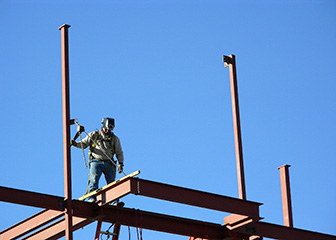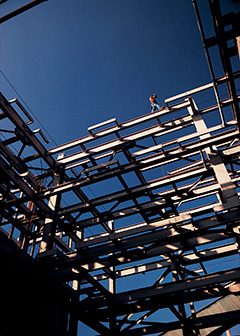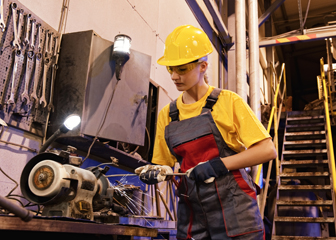Summary

| Quick Facts: Structural Iron and Steel Workers | |
|---|---|
|
$44,540 per year
$21.42 per hour |
|
| High school diploma or equivalent | |
| None | |
| Apprenticeship | |
| 59,800 | |
| 22% (Faster than average) | |
| 13,100 | |
What Structural Iron and Steel Workers Do
Structural iron and steel workers install iron or steel beams, girders, and columns to form buildings, bridges, and other structures. They are often referred to as ironworkers.
Work Environment
Ironworkers perform physically demanding and dangerous work. They usually work outside in all types of weather. Ironworkers have one of the highest rates of injuries of all occupations.
How to Become a Structural Iron and Steel Worker
Although most ironworkers learn their trade through a formal apprenticeship, some learn informally on the job. Certifications in welding and rigging can be useful.
Pay
The median annual wage of structural iron and steel workers was $44,540 in May 2010.
Job Outlook
Employment of ironworkers is projected to grow 22 percent from 2010 to 2020, faster than the average for all occupations. The need to rehabilitate, maintain, and replace a growing number of older bridges is expected to drive employment growth, as will the ongoing construction of large projects, such as high-rise buildings. Job opportunities should be best in metropolitan areas, where most large construction projects take place.
Similar Occupations
Compare the job duties, education, job growth, and pay of structural iron and steel workers with similar occupations.
O*NET
O*NET provides comprehensive information on key characteristics of workers and occupations.
Contacts for More Information
Learn more about structural iron and steel workers by contacting these additional resources.










